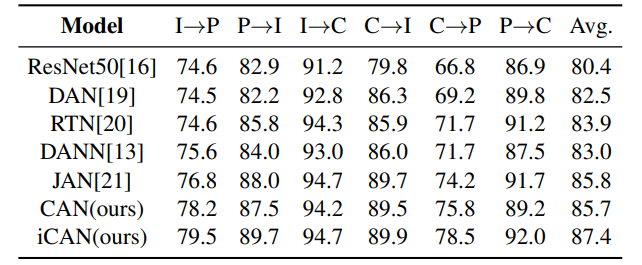- 分享主题:Transfer Learning, Unsupervised Domain Adaptation, Explicit Feature Distribution Alignment, CV
- 论文标题:Collaborative and Adversarial Network for Unsupervised domain adaptation
- 论文链接:https://ieeexplore.ieee.org/stamp/stamp.jsp?tp=&arnumber=8578498
1.Summary
This is a paper about classification tasks. Now there is a source domain and a target domain. The source domain data is labeled and the target domain data is not labeled. So this is a unsupervised domain adaptation problem. The iCAN model proposed in this paper not only uses the adversarial way, but also uses the collaborative way. The adversarial way refers to the inconsistency between the optimization objectives of the feature extractor and the discriminator. The collaborative way means that the optimization objectives of the feature extractor and the discriminator are the same. For the network in front of the last layer, the collaborative way is adopted. For the last layer of network, the adversarial way is adopted. This allows the previous layer to help with feature extraction. The last layer can help align the two domains. In order to deepen my understanding of this paper, I can read some papers about domain adaptation.2.你对于论文的思考
这是一篇关于DA的文章,这篇文章提出的iCAN模型与一般基于域对抗的DA模型的区别是,iCAN在前面的层加入了合作的域判别器,也就是特征提取器和判别器的目标是一致的,这样可以帮助前面的层提取特定于域的特征。3. 其他
3.1 需要解决的问题
加入合作的域判别器,帮助特征的提取。3.2 iCAN

3.2.1 合作部分
特征提取器和与判别器的优化目标一致。
3.2.2 对抗部分
特征提取器和与判别器的优化目标相反。
3.2.3 标签分类损失
交叉熵:
3.3 实验
(1)数据集:Office-31
(2)数据集:ImageCLEF-DA

